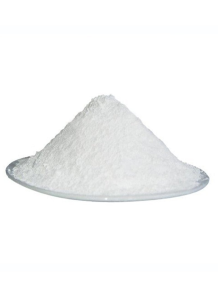Aluminum potassium fluoride (Potassium fluoroaluminate)
- Product Code: 127689
Aluminum potassium fluoride is used in the production of aluminum, where it acts as a melting agent in the electrolysis of aluminum oxide, helping to lower the melting point and increase the efficiency of the separation of aluminum metal. It is also used in the ceramic and glass industries to improve the thermal properties and durability of the material, and also finds use in metal surface coatings to increase strength and prevent corrosion.
Aluminum potassium fluoride is used in the production of aluminum, where it acts as a melting agent in the electrolysis of aluminum oxide, helping to lower the melting point and increase the efficiency of the separation of aluminum metal. It is also used in the ceramic and glass industries to improve the thermal properties and durability of the material, and also finds use in metal surface coatings to increase strength and prevent corrosion.
Aluminum potassium fluoride is used in the production of aluminum, where it acts as a melting agent in the electrolysis of aluminum oxide, helping to lower the melting point and increase the efficiency of the separation of aluminum metal. It is also used in the ceramic and glass industries to improve the thermal properties and durability of the material, and also finds use in metal surface coatings to increase strength and prevent corrosion.
| Mechanism | - |
| Appearance | - |
| Longevity | - |
| Strength | - |
| Storage | - |
| Shelf Life | - |
| Allergen(s) | - |
| Dosage (Range) | - |
| Recommended Dosage | - |
| Dosage (Per Day) | - |
| Recommended Dosage (Per Day) | - |
| Mix Method | - |
| Heat Resistance | - |
| Stable in pH range | - |
| Solubility | - |
| Product Types | - |
| INCI | - |
Purchase History for
Cart
No products



